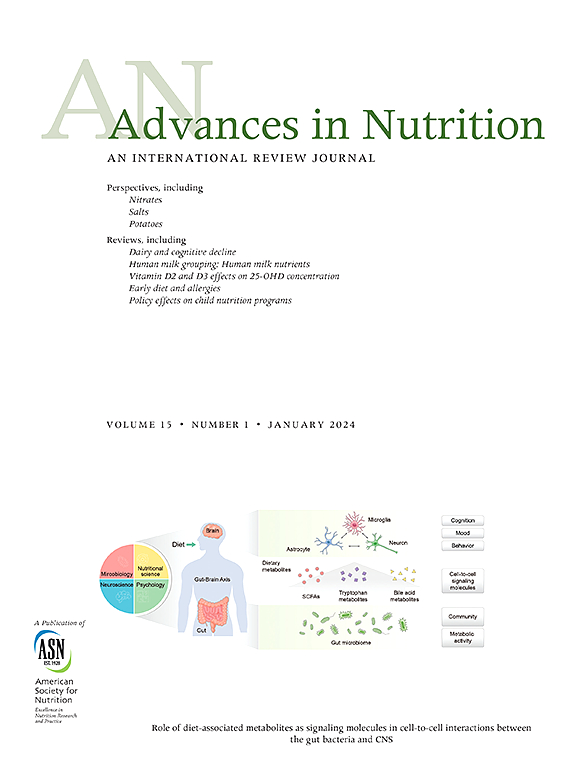展望:用于估计食物中营养素的吸收和生物利用度的预测方程的框架。
IF 9.2
1区 医学
Q1 NUTRITION & DIETETICS
引用次数: 0
摘要
目前的营养摄入建议、营养评估和食品标签依赖于食品和膳食补充剂中估计的总营养含量。然而,营养摄入的充足性不仅取决于摄入的总量,还取决于身体吸收和利用的部分。养分生物利用度的准确评估需要预测方程或算法。本文概述了一个旨在指导研究人员开发此类方程的四步框架。该框架包括:(1)确定影响营养素或生物活性化合物生物利用度的关键因素;(2)对高质量的人体研究进行全面的文献综述,为预测方程的发展提供信息;(3)基于这些见解构建预测方程;(4)在可行的情况下验证方程,以增强翻译。这种结构化的方法旨在提高营养物质生物利用度估计的准确性和精确性,解决数据局限性,并突出证据差距,为营养物质和生物活性化合物的未来研究和政策提供信息。本文章由计算机程序翻译,如有差异,请以英文原文为准。
Perspective: Framework for Developing Prediction Equations for Estimating the Absorption and Bioavailability of Nutrients from Foods
Current nutrient intake recommendations, nutritional assessments, and food labeling rely on estimated total nutrient content in foods and dietary supplements. However, the adequacy of nutrient intake depends not only on the total amount consumed but also on the fraction absorbed and utilized by the body. Accurate assessments of nutrient bioavailability require predictive equations or algorithms. This paper outlines a 4-step framework designed to guide researchers in developing such equations. The framework includes: 1) identifying key factors that influence nutrient or bioactive compound bioavailability; 2) conducting a comprehensive literature review of high-quality human studies to inform the development of predictive equations; 3) constructing predictive equations based on these insights; and 4) validate the equation, when feasible, to potentiate translation. This structured approach aims to enhance the accuracy and precision of nutrient bioavailability estimates, address data limitations, and highlight evidence gaps to inform future research and policy on nutrients and bioactive compounds.
求助全文
通过发布文献求助,成功后即可免费获取论文全文。
去求助
来源期刊

Advances in Nutrition
医学-营养学
CiteScore
17.40
自引率
2.20%
发文量
117
审稿时长
56 days
期刊介绍:
Advances in Nutrition (AN/Adv Nutr) publishes focused reviews on pivotal findings and recent research across all domains relevant to nutritional scientists and biomedical researchers. This encompasses nutrition-related research spanning biochemical, molecular, and genetic studies using experimental animal models, domestic animals, and human subjects. The journal also emphasizes clinical nutrition, epidemiology and public health, and nutrition education. Review articles concentrate on recent progress rather than broad historical developments.
In addition to review articles, AN includes Perspectives, Letters to the Editor, and supplements. Supplement proposals require pre-approval by the editor before submission. The journal features reports and position papers from the American Society for Nutrition, summaries of major government and foundation reports, and Nutrient Information briefs providing crucial details about dietary requirements, food sources, deficiencies, and other essential nutrient information. All submissions with scientific content undergo peer review by the Editors or their designees prior to acceptance for publication.
 求助内容:
求助内容: 应助结果提醒方式:
应助结果提醒方式:


